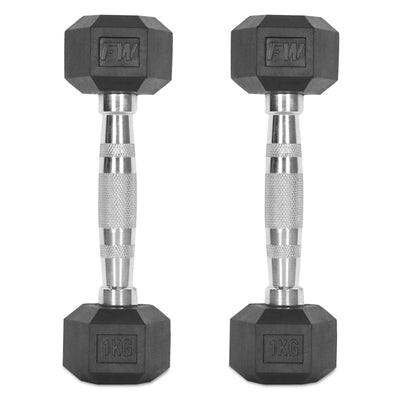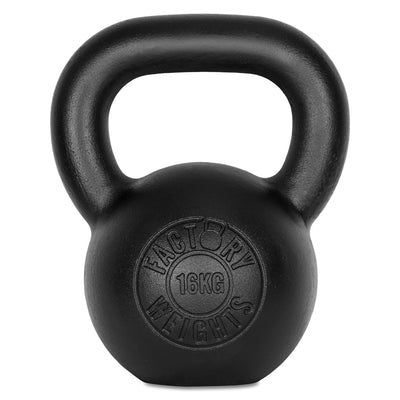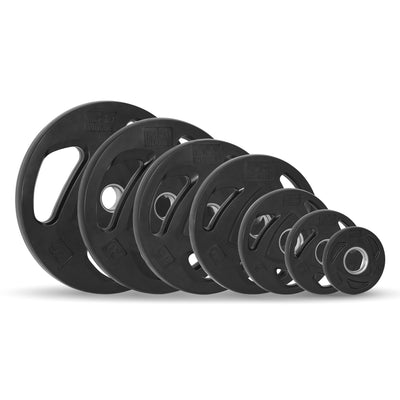Top 10 Rear Delt Exercises

Are you looking to add some muscle mass to your rear delts? You’re in luck! At Factory Weights, we don’t only provide excellent equipment for your commercial or home gym, we’re pretty passionate about fitness in all aspects. While getting the perfect broad shoulders and back may take a while, one secret that many people forget about is working out their rear delts.
Take a look at our complete guide, which covers the top 10 best rear delt exercises that you should add to your routine and how to do them.
SEATED REAR DELT FLY
A great exercise for working your rear delt muscles is the seated rear delt fly. It’s particularly effective at targeting this muscle group and also improves the balance and stability of the shoulder joint. One major benefit of the seated rear delt fly is that it emphasises the rear delts without overtly involving the other larger muscle groups in your shoulder.
Here’s how to do the perfect seated rear delt fly every time:
-
Sit on the edge of a sturdy bench or chair and place your feet flat on the ground.
-
Hold a weight in each hand with your palms facing each other.
-
Lean forward slightly and slowly raise your arms out to the sides until they are parallel to the floor.
-
Hold for 1-2 seconds before slowly lowering them back to the starting position.
-
Repeat for 10-12 reps.
STANDING REAR DELT FLY
The standing rear delt fly is just as effective of an exercise as the seated rear delt fly for targeting the deltoid musicals. The difference is that this standing position requires more engagement with your core, integrating your stabilising muscles. The exercise still focuses on the rear delts, but the other upper back muscles are also worked. This makes the standing rear delt fly ideal if you want an exercise that offers a greater range of motion and engages more of your upper back.
Here’s how to do the standing rear delt fly:
-
Start by standing with your feet shoulder-width apart and your core engaged.
-
Hold a weight in each hand with your palms facing your thighs.
-
Bend your elbows and lift the weights towards the back of your head.
-
Keep your shoulders down and your core engaged as you extend your arms back to the starting position.
-
Repeat for 12–15 reps.
PRONE REAR DELT FLY
If you want a highly effective exercise that isolates and strengthens your rear delts, the prone rear delt fly is superb. The rear position of this exercise takes away any leeway that you receive from using your body’s natural momentum, making it the most strenuous and pure form of exercise that targets the rear delt.
Here’s how you do this amazing exercise:
-
Lie face down on an exercise mat, keeping your head and neck supported.
-
Bend your right elbow and position your hand close to your right shoulder.
-
Extend your left arm out to the side and hold onto the weight stack or band.
-
Keeping your back flat, slowly raise your left arm until it's in line with your shoulder.
-
Pause and then slowly lower the weight back to the starting position.
BENT-OVER REAR DELT FLY
The bent-over rear delt fly is a real rear delt burner. It engages your shoulder muscles as you lift your weights against gravity in a position parallel to the floor. It’s also an excellent exercise for stabilising your lower back and core.
Here’s how you do it:
-
Start by standing with your feet hip-width apart and holding a weight in each hand with your arms extended straight in front of you.
-
Bend at your hips and waist until your torso is nearly parallel to the floor, then slowly lower your arms to the sides of your body.
-
Squeeze your shoulder blades together as you raise your arms back to the starting position.
-
Repeat for 12-15 reps.
-
Finish by performing 3-5 sets of 12-15 reps.
LYING REAR DELT FLY
To do a lying rear delt fly, you’ll need to be lying on a bench or a flat surface. This exercise is great for strengthening your rear delts — but using the lying rear delt fly requires that you maintain a strict form throughout the entire exercise’s movement.
If you want to know how to do a lying rear delt fly, here’s how:
-
Lie flat on your stomach on an exercise bench, with your head and chest off the bench and your legs together.
-
Place your hands flat on the bench next to your hips, with your palms down.
-
Keeping your elbows slightly bent, lift your upper body off the bench while simultaneously raising your legs in the air so that you are in a straight line from head to heels.
-
Hold for two seconds, then slowly lower your body and legs back to the starting position.
-
Repeat for 12-15 reps.
REVERSE PEC DECK FLY
The reverse pec deck fly is specifically designed to target the rear deltoids, using a machine to provide consistent resistance throughout the movement. This exercise is beneficial as it isolates the rear delts effectively, minimising the involvement of other muscle groups like the trapezius or the larger back muscles.
Here’s how you can execute the reverse pec deck fly every time:
-
Choose the weight you will use.
-
Lie down on your back on a bench and hold the weight in your hands above your chest with your elbows slightly bent.
-
Bring the weight down towards your chest until your elbows are at a 90-degree angle.
-
Keeping your elbows bent, lift the weight back up to the starting position.
-
Repeat.
SEATED CABLE ROW
Although many consider the seated cable row as primarily a back exercise, it’s extremely potent for building up your rear delt muscles. The consistent rowing motion requires your rear deltoids to work in conjunction with your secondary muscles, enhancing your upper back and shoulders.
Here’s how you do a properly seated cable row:
-
Sit on the bench and position the pulley above your head.
-
Grasp the handle with your palms facing each other.
-
Lean back slightly and pull the handle towards your chest.
-
Hold for a second before slowly releasing the handle back to the starting position.
-
Repeat for the desired number of reps.
ONE-ARM DUMBBELL ROW
Another back exercise, the one-arm dumbbell row, engages your rear delts as you complete your rowing motion. This exercise is unilateral, which means that it works one side at a time, allowing you to balance your development and see if there is any muscle imbalance between your shoulders.
Here’s how to execute the one-arm dumbbell row:
-
Start by positioning a weight bench in the middle of your workout area. Then, place a dumbbell on one end of the bench.
-
Next, place your left hand and left knee on the bench with your right hand grasping the dumbbell.
-
Keeping your back flat, lift the weight to the side of your chest.
-
Pause and then slowly lower the weight back to the starting position.
-
Repeat for desired reps and then switch sides.
T-BAR ROW
As we continue the trend of rowing exercises that also promote healthy rear delts, next on the list is the T-bar row. What’s effective about the T-bar row is that it requires compound movement, activating the rear deltoids along with the other larger back muscles like the trapezoids and laterals.
Here’s how to do the perfect T-bar row every time:
-
Choose the weight you will be using for your T-bar row workout.
-
Position the T-bar so that the handle is at shoulder height.
-
Step forward so that your body is in line with the bar.
-
Retract your shoulder blades and bend your elbows to pull the bar towards your chest.
-
Pause briefly, then slowly lower the bar back to the starting position.
MACHINE ROW
If you’re looking for an exercise that works your upper body, strength, and posture in addition to your rear delts, then look no further than the machine row. This exercise is great for developing your muscles in a balanced way, with attention not only on the rear delt but the muscles surrounding the shoulder joint.
Here’s the optimal machine row technique:
-
Choose the weight you will use for your machine row workout.
-
Adjust the machine to fit your height and body size.
-
Sit on the machine with your back straight, feet flat on the ground, and grip the handle with your palms facing down.
-
Pull the handle toward your chest, keeping your elbows close to your sides.
-
Pause briefly before slowly releasing the handle back to the starting position.



